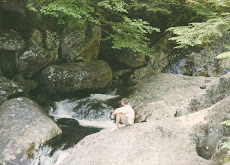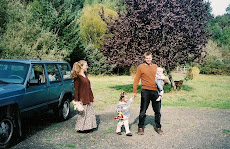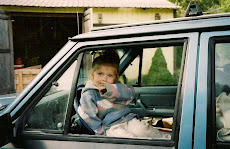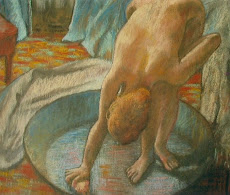Back to the land...
This year we haul out 10 tons of trash from an old burned down home. We plant a large garden, and fruit trees, and build a compost bin specifically for humanure. We build a small pad for a gazebo up under the oaks, and begin building our house/barn, with grading, a stone foundation, a concrete stem wall, and the modified post and beam frame. Everything is done by hand. We also dig four thirty foot swales across the top of the clearing and plant the berms with blueberry. A lot of work, and a lot more to go . . .
I'll also cover the process of picking out a piece of land, the negotiation, and "where to begin?" phase, at least how it all went for us.
[YEAR 2] - We build the shell of a 16'x25' two story cabin from scratch . . . check out how it was built.
[YEAR 3] - We try to finish the cabin . . .
[YEAR 4] - I move up permanently to the property to homestead full-time . . .

Monday, August 19, 2013
Monday, March 4, 2013
Goat Kids
The past 5 days have been unbelievably busy. All 6 of our does chose to deliver within a 3 day period. Two delivered through the middle of the night so we had to pull an all-nighter. We're still trying to catch up on sleep and nap whenever possible. But 6 does must be milked out twice a day, and the 13 babies must be bottle-fed 4 times a day. We just added it up last night and realized within a month these babies are going to require 5 gallons of milk a day. Some must be sold. We're going to do a photo shoot of all the kids this afternoon and put up ads.
Rachel and I have switched to a new system to handle the workload - she does the milking, and moves from doe to doe. I get them on the stand; groom them; filter, weigh, label, and put up the milk in the ice water bath, and write down the specific amount; keep her udder wash water hot; make sure the does finish their fodder, and put them up; fill the mangers with hay; wash the feed buckets, and top off and warm the does' water. This way we get the whole process of hand-milking 6 does done in under an hour. We nurse the babies by collar color, going from oldest to youngest, and get that done in under 20 minutes. We also work together on fodder, her washing grain and traying up, me washing trays and doing the rinsing.
Most of the deliveries went fine, with not too much assistance - though there were a few with malpresentation where Rachel had to straighten things out. The babies are all very healthy and have great vitality. They're all currently living up in the goat house. We've got the duck box, a bin on its side, lots of hay, and a large kennel draped with blankets inside the old coop for additional warmth. Though we've had day after day of snow and cold the babies are doing fine. I also took two old cold frames that were falling apart, cut the plexiglass, and made windows for the old coop so it's completely draft-free. It stays much warmer in there than outside in the attached stall:
Our first freshener Samanchas all had twins - one doeling, one buckling, except Pinkie - she had two doelings. We only expected twins from Pinkie, so twins from all of them is a great sign. And they've all nearly already made the first freshener cut of 1/2 a gallon of milk a day, just a few days into milking. We hope to get 3/4 a gallon of milk a day from each doe when they're at peak production.
Here is Pinkie and Shadow's mother, Marley, our top milker. This is a photo of her bagged up just before delivery - her udder is bigger than a basketball! And she coolly delivered triplet doelings. She's got a great pedigree:
She's looking a little ragged as she overproduces and we'll fight to keep her weight up all year. We've started this year milking her out 3 times a day to resolve her severely congested udder. Tomorrow we're switching her to 2 times a day as it's nearly cleared up. 4 days into milking, she's already producing a gallon a day. Last year she peaked at 5 quarts.
Cayenne and Sprite both had sets of large beautiful twins, one buckling, one doeling, in each set. Cayenne and Sprite are already over 3/4 a gallon a day and hopefully soon will make the gallon-a-day cut for a mature milker.
I've got the trailer working, and hauled back a last round of scrap boards for the garden:
The interior of the garden is now finally finished. I tore apart the old concrete block fireplace and used the blocks for retaining walls around the perimeter. This whole project only cost the price of the screws - maybe $30. But it did take 2 months of labor:
The beds along the perimeter where not taken up with perennials will be used for herbs.
The next project is clearing the fence line for the creek pasture, and putting in the electric fence. This next pasture should be easily over an acre, and it will be the lushest pasture in browse we've got.
20 degrees this morning, after 3 days of snow. Anybody sick of winter yet?
.
Friday, February 15, 2013
Mid Winter
So far 7 of the 9 garden beds are done. I've got enough scrap wood left for 1 more. Then I'll have to go to the mill and see what old stock he's got laying around that I can get cheap.
Great neighbors brought over an old utility trailer for us they don't have any use for. It looks to be in good shape, and rated for 2000 lbs. All it needs is a new tire. And of course a ball hitch for the Explorer. Once I've got it fixed up I can haul the wood from the mill myself.
It's been a very busy week. Tuesday was Rachel and I's anniversary. Yesterday we had people here all day. In the morning we had a fodder class for a fellow producer of raw goat milk. Through the afternoon RIVR Productions was here shooting hours of footage of the property and interviews with Rachel and I. They're putting together a preview for an Animal Planet show called "Living on the Edge", about people living off-grid. There are only 2 finalists for the pilot, but if the show is serialized they'll probably feature us. Then a family came to buy Josie, checked out the barn and fodder and we talked humanure. They also practice composting human waste, and may come back for a class or two.
This is Buffy, our new addition to the farm:
She's a toy rat terrier mutt a customer brought over since we've had so much vole trouble. He said she catches rodents daily over at their place. The girls decided to call her Buffy [a.k.a The Vole Slayer], but she hasn't gotten a vole yet. So far she's lazy as sin and will nap all day. But she's an absolute angel inside - the best mannered dog I've ever seen. Buffy's a little chubby and could lose a pound or two. We'll soon be switching her off kibble to a raw meat diet and we'll see if that picks up her energy a little. Rachel's been dropping little pieces of kibble down the vole holes and it does get her interested in the holes. She's a little nervous about digging though - worried she'll get in trouble. So far she hasn't seen or caught anything.
We know the voles are here. After eradicating them from the shed area we found babies wiping out the turnip crop. We managed to kill 3 while harvesting what was left of the turnips [not much]. Then they went after the mustards, and they had to be dug up and fed to the goats. The yard is now Swiss cheese - there are vole holes everywhere. They have no interest in bait, we can't find runs, so trapping is useless. If Buffy doesn't become the vole hunter we're hoping, we'll try some more rat terriers, raising them as pups, and exposing them to the rooster early so they learn a lifelong lesson to fear and dread chickens.
Harley's friend's dad brought over a cord of split oak he couldn't use as he has no stove. It'll need a month or two to season, but it's a nice gift:
Our seedlings are taking off under the shop lights in the loft nursery. It's our first year starting onions from seed, and the Brussels and Lettuce are doing really well - nearly big enough to transplant. Our Alpine strawberries we're trying from seed are also sprouting up:
We're about to plant our peas [trying Mr Big Pea this year]. It's so much easier putting in the poles and rope for vines with the new bed framework to tie into:
.
Saturday, February 2, 2013
Snow
Snow yesterday. And snow again all day today:
Flurries tomorrow.
We've had to struggle through the weather lately. We've got the ground floor of the barn reasonably cleaned out, and have started getting the goat house ready for kidding. I've put a run door back in, and made a door for the goat house addition out of a piece of utility panel. Once we get hinges, the old coop door will go back on, and then we just need to clean out the floor of the old coop and put in fresh bedding. We may run a line of extension cords from the barn up there so we have a plug-in light for the late-night bottle feedings.
Rachel's ordered all her kidding supplies. She's printed out an exhaustive list of delivery complications and how to cope with them - so that in the panic of the moment we know how to handle it if something goes wrong. Last year Mabel and Onyx did fine, and Rachel only assisted in pulling one of Josie's legs out when she noticed she was coming nose-first.
I've been working on putting up more orange mesh along the bottom of the fence line, so once we get another pasture gate in [with chicken door] we can expand the hens' range. We'll have over an acre for 12 birds . . . plenty of room to increase the flock.
The floor of the barn coop is cleaned out, and bedded deeply with sawdust [the old bedding went into the swales behind the upper blueberries]. The hens are laying very well with the increase in sprouted lentils. They're now sprouted up green into shoots - something that happened accidentally as we were overproducing to get caught up, and the fodder and lentils took off. The birds love them green. The lentils used to be the last thing they ate, now they're the first.
We're getting an average of over 7 eggs a day in the middle of winter from 11 pullets. We're pretty happy with that. They laid 10 the other day. 8 today. And finally all the Araucana hens are in production, as we got 5 eggs from 5 hens today. One of them still has a small blue starter egg. The few voles they had can't fully account for the increase, since they're long gone [and the hens may not have eaten the last few, as we discovered a rat tunneling in and out of the coop]. Our feed cost is now under 60 cents a day for the birds. A daily average of 7 eggs is worth $3.50. The birds are paying for their own feed, and easily covering one of our bills. There's also the benefit of their copious fertilizer, bug-eating, and their entertaining presence on the farm in general. Raised as day-olds they're very friendly, and mob me when I go out to feed, some flying up into the bucket I'm carrying to get the first bits. So far we have not lost a single bird since the electric fencing went in, 6 months ago.
The Araucana rooster has turned out great. He's a good guardian, but not aggressive. I found him in a nest box the other day making a nest, picking up straw with his beak, and softly calling to one of the Araucana pullets - maybe the one that hadn't laid yet. She climbed in and settled in. He then stood halfway out the box, blocking her from leaving, and kept a long soft cooing to her to encourage her to lay. She stayed in so long after he'd left I thought she went broody. I put fresh hay in the duck nest box on the floor since there's now so much traffic with our 3 nest boxes, and he was the first one in calling the hens to check it out. A few did . . . but weren't all that interested.
We've been aggressive with the rodent problem, and so far it seems our tactics have worked. Clearing out all brush around the garden got the voles mostly out of there - we'd found and killed 3 in the beds and haven't seen them since. The voles migrated over to the debris around the shed, and I began seeing them. I noticed one scurrying along one wall inside the shed, so we put out 11 rat traps that night [mouse traps are not nearly big enough for our voles, which are in size about halfway between a mouse and a rat]. We got one along that wall while setting up the traps. We got three more in the same spot that night. That was 4 days ago, and we haven't seen or heard them since. Voles definitely stick to their runs. The traps were baited with chunks of apple sewn to the bait pedal.
We'd noticed something getting into our pumpkin stash in the barn [about 150 pumpkins for the goats], and assumed it was mice. But we noticed some large holes in the ground beneath them, especially when cleaning out the last of the pumpkin rot. A few days ago something dug out a tunnel from outside the barn, underneath the foundation, and into the chicken coop. After some research, the most likely critter was a Norway rat. It was going in to the coop at night and cleaning up the last of the chickens' fodder. It hadn't noticed the eggs yet, or tried going after the birds - though I'm sure it startled them.
We stopped feeding the birds in the coop, cleaned it out, filled the tunnel under the foundation with gravel, packed and covered it. I put out two trays of D-CON bait, both in the barn and out of reach of the chickens - one by his pumpkin burrow, and one by his tunnel from inside the barn into the coop. I also put out 2 rat traps with peanut butter that were not set. The idea is to get him [them] comfortable with eating from the trap before you spring it.
The first night all the bait was gone. We either had a bigger rat problem than we thought, as we'd never actually seen them, or the rat[s] was hoarding it in his burrow. The next night only one tray of bait disappeared. The next night half of one tray. It never touched the peanut butter - maybe wary of traps. Last night no bait was missing. The mostly likely scenario is it's dead. We won't really notice a smell till it warms up.
Fodder is now caught up and overflowing. I think we'll stick to bucket-sprouting the chickens' feed to conserve shelf space for the goats. I tried a little of the birds' fodder on the way out to feed them - a lot like any sprouts at first, but then that wheatgrass flavor hit, and they're as sweet as candy. No wonder the birds love them.
We're moving to using only fresh-ground flour for our breads. The problem is we can't yet afford a grain mill. So Rachel's experimenting with making sprouted bread. The first two loaves were good, a little crunchy, but the third was phenomenal and she's got it down now. It is way better in flavor and texture than any bread I've ever had before. It does take a little sweetener though. The kids call it fodder bread . . . but it's actually not, as the fodder's made from seed wheat, and the wheat we use for sprouted bread is hard red winter. Rachel's tried mashing sprouts in both the food processor and the manual meat grinder, and we've found it turns out best with 2 passes through the meat grinder. So even without a grain mill, we've still got 100% fresh whole wheat bread. And no electricity required.
The goats have been stuck in their stalls over the snowstorm, getting very big, now within a few weeks of kidding. Unfortunately we're running out of hay. Nobody wants to deliver just 2 or 3 round bales all the way out to Sunbright. Square bales which we can haul ourselves are far more expensive - at least twice the price. There's an old trailer I may be able to fix up so we can haul our own hay. That's going to have to move up the priority list.
Here are the big girls, the Lamanchas, veteran milkers, left to right Marley, Cayenne and Sprite:
The Samanchas, soon to be first fresheners, left to right Shadow [the top doe], Lily and Pinkie. Josie's the mini Alpine/Nubian cross, Mabel's doeling, who will shortly go up for sale. Now that the doelings have gotten over 90 lbs, their horns trump the size and age of the Lamanchas [who weigh between 130 and 140], and they're the top goats. They're the first ones through the gate, every time:
We watched a video on some guy's big raw milk operation, with 15 cows . . . not all that great, the video . . . but it got me thinking - wouldn't it be nice to have a dairy parlor. I'd have to tear the shed down over the well, cut down that leaning oak, and build it there. It'd be a sort of all-in-one, full-service parlor with a milking area and stanchions, a dairy processing and storage area, and a room for growing all their fodder. We could handle 16 does in milk this way . . . but would probably have to acquire some adjacent property to expand the pasture. And a milk machine. Very, very, long-term idea . . .
We're constantly updating the HOLDOUT FARM website, and adding new pages. We'll do a marketing blitz once the does are about to kid.
.
Friday, January 25, 2013
The Ice Storm
The ice storm today shut the city down. It's an inside chore day. I'll have to wait till the weather clears to keep going on the garden:
The chickens are laying very well now that the 15% sprouted lentil ration has kicked in. It usually takes about a week before we see the results of a dietary change. Our 11 starter hens were laying an average of 3 to 3.5 eggs a day over the past month. The last 4 days they've laid 26 eggs! That's 6.5 per day. We got 8 today, a record for the new flock:
But they have eaten 2 voles over the last week, and that may be causing the spike. They've also been getting a little fish oil as well, as we're trying eating high-DHA fish twice a week, like herring, salmon, and mackerel, following the research of Weston Price on worldwide indigenous and traditional whole foods diets.
The bucket-sprouting we resorted to to pull the chickens off fodder till we're back on track has done surprisingly well. 2 pounds of grain are filling out into 7 pounds of sprouts quite rapidly, with good root growth. If we can get some green shoots going with a day in the light it may be something to continue with the birds, as we've got limited shelf space, and once the does go into milk they'll eat far more fodder.
.
Tuesday, January 22, 2013
The Goat House
16 degrees last night and tonight. With the cold wind, it feels like single digits. It never got above freezing today. But it was a record day for eggs, 6 from 11 hens. Which looking at small-scale chicken economics, this is a $2 profit in one day. Not bad for birds . . .
It's great they're increasing laying as the 15% lentil ration kicks in. We've got to fill a customer order for 2 dozen quick.
Fodder at the moment is a crisis. As we expanded production with the does going in to their 3rd trimester, we ran out of trays. We had to skip 2 days till we could get out to Walmart for more trays [fodder does best for us with a very specific tray]. And with fodder, it's like steering a huge ship. Subtle changes hit slowly and cumulatively over time till we started to get short. And once you get short, it can be a downward spiral from there, because the feed you're putting out is under-mature and of less weight so it takes more of it. A fully mature biscuit of fodder on one of our large trays weighs 10lbs. The stage we're feeding it at now it's 3.5lbs. Rachel's stressed, and feels like she's bleeding grain . . . but we keep soaking double batch after double batch and traying everything out till we get caught up. We've had to pull the birds off fodder temporarily, and put them on bucket-sprouted grains and lentils, till we get through the crisis.
Our seedlings are sprouting up, especially the lettuce and onions. The Brassicas are about half up. We'll direct sow the mache on the 1st of February.
I'm now working on framing out the 6th garden bed, bed #9. It's a long labor-intensive project using whatever scraps I can find . . . even some charred pieces from the old burned down double-wide.
So far I've whacked 3 voles with a shovel and fed them to the chickens. They're the only animals I've ever killed. We find them hiding in the garden in the morning under the blankets we're using to protect the last plants they've left us. Of course they've probably been pigging out all night. And whacking down with the shovel takes out a few plants. We've been doing a lot of garden cleanup and brush removal to cut down on vole habitat. I've mowed the area around the garden very short. Once we can find well-used pathways, we'll put out traps.
We've spent much of the long evenings working on the Holdout Farm website. The 'Classes' and 'History' pages are now done.
Rachel and I got a bad cold over the holidays, and mine turned into pink eye. We used fresh juice from our aloe vera plant and that cleared it up rapidly. Rachel and I wonder if there are some immunity benefits from our raw goat milk, because we didn't get sick all year drinking it and now that the does are dry we're out and not feeling as well as we did. Though giving up caffeine has helped.
I built the above addition on the old chicken coop over the summer, so the goats will have more space to run in out of the rain. We now call it the 'Goat House', though it resides in the pasture we still call the 'Coop Pasture'.
It's a 12'x12' addition, and modeled on photos of traditional goat houses on open ranges. It's got a gutter on the back, so we can harvest rain, and is deeply bedded with old tall grass mowed down in the pasture. Since the goats are either in their stalls or out in the wooded 'Marsh Pasture', they don't use it much. But all the does are about to kid soon, and this is where we'll raise the kids. It's a bit of a hassle walking all the way up there and back for bottle-feeding, but it's a nice warm secure shelter away from the older does. We'll probably sell all the kids from the Samancha triplets as they're first fresheners and not proven milkers. But the kids from our mature Lamanchas, who are all good milkers, may be candidates for raising up. We'll have to see how big the demand for our fodder-fed raw goat milk is. So far we've got our existing customer base, and a great deal of local attention from getting the word out on the internet. We may not be able to fill demand this year, and will have to purchase additional does.
.
Wednesday, January 16, 2013
The New Flock
We've had endless rain the last few days with more rain to come. Temperatures have gone from a balmy 60/50's to 30's day and night. Graywater is backed up, the garden work has stopped, we're scrounging for dry wood, and the goats have been stuck in their stalls. But we have started the first seedlings for our spring garden - bunching onions, Brussels sprouts, cabbage and lettuce - in our little indoor nursery.
We're down to 12 chickens and the ducks are gone. Going into the winter we've decided to cull all animals that are non-productive to reduce feed costs. We put up a free ad for the 3 ducks, the 2 big roosters, and our 2 older hens. The stipulation was that somebody had to take them all - a guy came out the very night we put the ad up and took them away. He's got a lot of land and a large pond, and he called us later to tell us the ducks never left the pond - they even sleep on the bank. He likes our barn and may hire me to build one for himself [simply walling-in his existing hay barn with board and batten].
The older hens, roosters and ducks were not only non-productive, they ate a disproportionate amount of the feed we put out twice a day - the shier starter hens were for the most part scared off, even with 3 separate feeding areas. The 2 mixed-breed duck hens laid great when in season, but we hadn't seen an egg from them for several months [regardless of how often the drake would go in to the duck nest box and call to them to get in and lay]. One of the Araucana pullets we got at the Co-op turned out to be a beautiful rooster - so we no longer needed the huge Cuckoo-Maran roosters. And our older hens that had come up with us from the beginning, Rosy and Claudia, were nearly out of eggs and on an extended moult. Since as vegetarians we don't eat the birds, the only solution was to give them away. They would at most sell for $5 a piece . . . but then we'd have to drag out the process selling them over time. We needed a clean break.
For us, from a purely economic standpoint, a hen's only major value is in her eggs. Sold for meat or production, she may bring in 5 bucks [10 at most if she's an exotic breed]. Since our eggs are worth 50 cents a piece, if she lays 200 eggs a year, that's $100 a year, paid out gradually, egg by egg. It's not her concern whether we personally consume or sell her eggs - just to produce them. Hens are most productive the first 2 years, as production typically decreases 20% a year. So we'll probably swap out birds every 2 years to a good home. Ideally one of our Araucana hens will go broody and we'll be able to raise our own chicks here for the next batch. Even if we ate an aging hen the value of her meat would still be only about $5. So losing a good layer to predation can be a loss of potential hundreds, not simply replacable with any old $5 bird.
Once the flock was thinned, we quickly went from 1 egg a day to 3 to 4 as the starter hens got more food. And we were able to reduce the total daily amount of feed from 6 lbs down to 4. This is 1/3 lb per bird per day - the recommended winter ration. Once winter's over and there's more at pasture we can go down to 1/4 lb per bird per day - a total of 3 lbs a day. Using fodder and sprouted lentils our feed cost for the birds is 20 cents/lb. Just 2 eggs a day generously covers their feed bill, as our pastured fodder-fed eggs sell for $6 a dozen.
Our fodder's made of mostly wheat, with some rye, oats, sunflower seeds and winter peas, all grown up into a forage grass. The chickens do best with it when the roots have developed a fine biscuit, and the grains are just pushing up new green tips. Anything beyond that and they tend to be a little wasteful [the ducks however would clean this up]. So while we increase the food volume 4 to 5 times from dry grain to full fodder for the goats, because the chickens eat it at an intermediate stage the volume is only doubled. This is where we get 20 cents per pound. We also add a tablespoon of powdered kelp per day to the chickens' feed. I used to break up their fodder biscuits before I put them out into their food bins, but found they do just as well tearing off fodder from the full biscuits to not bother with this anymore.
Here and there they get some table scraps, and if I'm working in the garden I'll inevitably find some fat Japanese beetle grubs to throw them.
We've always wanted to get the chickens on an all-natural diet, for the health of the birds and the quality of the eggs. We ran through many diets before we discovered fodder. However there's no question that protein content has a huge impact on egg production. This is something that gives us trouble through the winter [we have a light on a timer in the coop so they get 14 hours of light per day to keep them laying], as most of the bugs are gone and the pasture's down. We use the Pearson Square to calculate what ratio of feeds to get a specific level of protein - which for laying hens is considered to be 16% optimally. We put our fodder at 14.5% . . . though that's only the best approximation we can come up with after much research. If we use a minimal amount of a very high protein supplement it wouldn't take much to bring it up to 16%. But the problem with using say fish meal or blood meal is now you've lost control of the health of the diet and of the eggs. Meal worms are great but need indoor real estate and require time and care - and we only really need them a few months out of the year. We've used sprouted lentils so far as the birds' protein additive through the winter. We'd need to use a whole pound and a third according to the Square to hit 16%, but some research has shown chickens should only be given 15% maximum legumes out of their total diet - about half of what we need to hit 16% protein. So we've opted for doing that 15% of total feed per day as sprouted lentils [which the birds eat well], and the other 85% fodder. If we get a few less eggs it isn't the end of the world - as long as we get some. Though we have to buy lentils at the grocery store at $1/lb [much higher than normal feed costs], it expands so much through sprouting that it's not much more than the cost of the fodder itself. And it's a small part of the overall diet.
Our new starter flock is half Araucana and half Sexlink. We purchased them all as day-olds at the local co-op. We ran fodder and sprouted lentils with kelp through a manual meat grinder, then set it out in the sun to dry till it got crumbly. As a protein treat they occasionally got some scrambled eggs [which they loved]. They were handled as much as possible. The Araucanas are still a little skittish, but the Sexlinks are extremely friendly and excellent layers. They mob me when I go into the coop to feed them, trying to leap up into the bucket. The Sexlinks lay brown speckled eggs, and the 2 Araucanas so far laying have one a large blue oval egg, and the other a smaller pale pink.
We still have not lost a single bird to predation since we put up the 7 strand electric fence around their pasture. It has an 18" skirt of orange plastic mesh along the bottom to dissuade the chickens from ducking out under the bottom line. Ducks respect electric wire very well . . . but chickens not so much. However they're easily fooled with the plastic mesh.
We're going to purchase a batch of day-old Welsh Harlequin ducks in the spring. They're a production strain with the capacity to lay from 200-300 eggs a year. They also go broody and can raise their own. We love ducks - they're entertaining, great foragers, easy to herd, not as hard on high-intensive areas [like tearing mulch apart around perennials the way chickens do], lay huge wonderfully-flavored eggs, and make a great high-nitrogen fertilizer in their duck pool/stock tank which is drained, cleaned and filled once a week. And though ducks require 1/3 lb of feed per day all year . . . they do very well on fodder at all stages, and their pastured eggs sell for $10 a dozen.
.
Monday, January 7, 2013
The Winter Garden
Our big winter project is framing out the garden beds with old boards. I started using board and batten scrap left over from siding the barn, and am now tearing down a neighbor's old chicken coop for boards. Most are usable, by doubling up the 1x's - those that aren't will become firewood. Considering how poorly our hated Homelite chainsaw is currently functioning, any additional firewood that falls from the sky is worth burning.
3 out of 9 beds are done so far. They're terraced in sections due to the slope to the west. Between them are the nice concrete pathways from the old double-wide foundation. The beds aren't so much raised as given a form to hold them in place. Before we'd constantly had good fertile soil washing off the mounded beds into the pathways. And once summer hit the plants had gotten so huge and sprawling the garden turned into a jungle we could barely wade through.
I'd read the best way to put a garden to bed for winter is to give it a bath, something to eat, something to drink, and a blanket. This means cleaning out all the old plant debris to compost, adding a couple of bins of finished compost - for the blanket, either moldy hay from the floor of the barn, or shredded composting leaves we'd had around a fruit tree that was used for growing potatoes [which the voles mostly ate]. And for water, graywater from the sink and rinsewater from the fodder. This will go out in rotation to the fallow beds through the winter. In the same analogy, the beds need plenty of water to digest their food. Unfortunately the Dishmate soap with only one ingredient we've been using isn't all-natural like we'd thought after some research. So we'll switch to Dr. Bronner's.
We'll be adding some true raised beds to the north and east side of the garden - probably a series of 4x8's or 4x10's with 3' pathways between them. These beds will be made with 2x12 's, so a foot high, and filled with topsoil removed from where the cabin porch will go, and compost which we've accumulated massive amounts of with the humanure, the poultry, the goats, kitchen waste, weeds, and grass clippings. We fill a 5'x5' bin every 60 days.
With me working full-time this summer we got way behind in the garden and never had the chance to get up our row tunnels. It didn't make much of a difference though as our vole population has exploded. They can wipe out an entire garden bed in 2 nights. Late winter is the time to really go after them, when there's not much food - we'll try a combination of traps, bait, buckets of water, clear out as much mulch and debris as possible, and we're hoping giving some structure to the garden with all the raised beds will help. The common phrase I see over and over again in Permaculture is "productive mess". Unfortunately that's exactly the environment in which voles thrive. And they're now going after the trunks of our young fruit trees. Hopefully we can get it under control by spring.
On the flipside, we've got a forecast of lovely warm weather for the next week - we're already sick of the cold, and the constant freezing nights we have to cover the garden for and thaw animal water for are a hassle. Longer days too . . . we can get more done.
We have a lot of free time in the long winter evenings and have been reading Dr. Weston Price's 'Nutrition and Physical Degeneration'. He's a dentist that traveled the world in the 1930's and studied the teeth of indigenous and isolated rural people before and after they were exposed to modern foods. To sum it up . . . people eating a traditional whole food diet had nearly perfect health and teeth, and once exposed to modern foods such as white flour and sugar, they developed rampant dental caries and malformed dental arches, as well as crowded and irregular teeth - and other ailments such as arthritis and tuberculosis took over. It's a great read. Here's a link. We've so far cut out alcohol, caffeine, replaced white sugar with demerara and minimized it, and will soon get a hybrid manual/electric grain mill to start milling our own flour. The organic artisan-grown tobacco we smoke will probably be the last and hardest thing for us to give up.
.
Blog Index
BUYING RAW LAND
11/8/08
TRASH CLEANUP
11/10/08
WINTER IN ATLANTA
11/12/08
SPRING IN TENNESSEE
11/14/08
STARTING A GARDEN
11/15/08
BUILDING THE COMPOST BIN
11/15/08
THE FROST
11/16/08
GRADING THE BARN
11/18/08
DIGGING SWALES
11/19/08
PLANTING FRUIT TREES
11/19/08
BUILDING A STONE FOUNDATION
11/20/08
THE CONCRETE STEM WALL
11/21/08
BUILDING A SMALL 12'x12' PAD
11/21/08
THE GARDEN
11/22/08
BUILDING A DRIVEWAY
11/23/08
INSTALLING THE SILL PLATES
11/23/08
THE MODIFIED POST AND BEAM FRAME
11/27/08
FRUIT IN THE GARDEN
11/28/08
THE BARN FRAME
11/29/08
AUGUST IN TENNESSEE
11/30/08
HANGING THE JOISTS
11/30/08
CLEARING THE LAND
11/30/08
COUNTRY NEIGHBORS
11/30/08
THE HARVEST
12/1/08
PLANS FOR A CABIN
12/14/08
THE LAND IN WINTER
12/22/08
BARN UPDATE
12/29/08
WINTER PLANTING
1/4/09
EDIBLE PLANTS
1/10/09
WINTER TREES
1/12/09
WINTER TREES II
1/21/09
CHATTAHOOCHEE RIVER
2/11/09
THE STRAW BALE CABIN
3/26/09
THE STRAW BALE CABIN II
4/2/09
1880 FARMHOUSE
5/6/09
HOMESTEADING / THE CABIN
8/13/09
THE POST AND BEAM CABIN
8/22/09
RETURN TO TENNESSEE
8/25/09
SITE WORK
8/30/09
DIGGING THE FOOTERS
9/4/09
THE PIER FOUNDATION
9/10/09
911
9/11/09
FINISHING THE PIER FOUNDATION
9/12/09
THE GIRDERS
9/13/09
FRAMING THE FLOOR
9/16/09
DECKING THE FLOOR
9/17/09
THE POST AND BEAM FRAME
9/19/09
THE RAFTERS
9/20/09
INSTALLING THE METAL ROOF
9/21/09
FRAMING THE WALLS
9/26/09
DOORS AND WINDOWS
9/27/09
TENNESSEE IN JULY - OUR LAST MONTH
10/2/09
TENNESSEE IN OCTOBER
10/10/09
THE BARN FLOOR
10/15/09
PIGEON MOUNTAIN
11/10/09
NOVEMBER
11/16/09
PERMACULTURE: ANOTHER ROUND OF FRUITING SHRUBS
11/22/09
DRIFTERS
11/30/09
THE BARN ROOF BEGINS
12/20/09
'DRIFTERS' PART I
12/30/09
WEATHER
1/1/10
NEW YEAR'S IN TENNESSEE
1/25/10
DRIFTERS: PART II
3/2/10
MY SISTER'S WEDDING
3/21/10
FERTILIZING WITH HUMANURE
3/28/10
THE ADDITION FLOOR
4/19/10
THE ADDITION
5/11/10
RUNAWAY
6/13/10
FINISHING THE ADDITION
.........................The Timeline.........................
1992
-MAY . . . for Patty and I's first date, we skip school and go to the Pinnacle - a wooded overlook off the Susquehanna River.
-SEPTEMBER . . . I leave our hometown of Lancaster, PA for college - Penn State in Reading, 45 minutes away.
1993
-FEBRUARY . . . Patty and I both drop out of school, and camp in some woods behind a grocery store in Lancaster.
-MARCH . . . Patty steals her mother's credit card, and with it we take a train to Utah. We ultimately end up on the Northwest Coast, living in Port Orford, Oregon.
-APRIL - OCTOBER . . . We join a traveling carnival and work in it for 6 months. We sleep in the back of a Ryder truck, and go through California, Idaho, Washington and Oregon. I run the guns, and Patty does the goldfish. We save $9,000.
-NOVEMBER . . . We return to Lancaster and are arrested for stealing the credit card.
1995
-OCTOBER . . . We bike from Lancaster down to Charleston, South Carolina. Patty wrecks in North Carolina, and a friend drives us the rest of the way. We live in Charleston for 2 weeks.
1996
-JULY . . . Our first daughter June is born in Lancaster, PA.
1997
-MARCH . . . We sell everything in our apartment, and hike out of Lancaster with backpacks and our 9 month old daughter. We reach the Susquehanna River.
-APRIL - JUNE . . . We get a canoe and paddle 500 miles up the Susquehanna River to its source. We camp on islands. We get a ride to the Erie Barge Canal and paddle west.
-JULY . . . We are arrested in Little Falls, NY. Our daughter is taken, we're charged with neglect, and we fight the courts for months. We are cleared of all charges, but never get her back.
-SEPTEMBER . . . We take a bus out to Ruidoso, NM and camp in woods just out of town. We return to Lancaster and camp in the Brickyard for the rest of the month.
-OCTOBER - FEBRUARY . . . We live in an apartment in the Amish community of Strasburg, PA. Amish go by in their horse and buggies every day.
1998
-FEBRUARY . . . Our second daughter Rachael is born. We try to deliver her on our own at home and fail. Patty ends up in the hospital with a c-section.
-MARCH . . . We get a ride from a friend down to Covington, Virginia. We stay a week, and look for places to camp in the surrounding national forest. We find nothing, and go to New Mexico.
-MARCH - MAY . . . We camp in the Gila National Forest, north of Pinos Altos, a mile from the nearest trail. We camp above a spring with an infinite view west. We start building a hogan.
-JUNE - SEPTEMBER . . . We live downtown in Santa Fe, NM. Patty markets her paintings, and I get a N.Y. literary agent for my first book 'Flesh Aflame'.
-OCTOBER - DECEMBER . . . We rent a house in Crescent City, California, on the Northwest Coast, a mile from the ocean, on the edge of a bird sanctuary. It's great until the rains begin and we run out of money.
1999
-JANUARY - FEBRUARY . . . We camp in the Uwharrie mountains of central North Carolina, and look for a place to build a winter home.
-MARCH . . . We get a canoe and paddle the Holston River down towards Knoxville, Tennessee.
-APRIL . . . We get dropped off in the Smokies and paddle Fontana Lake. We stash our canoe at Chambers Creek and hike in to the Smokies for a secret camp. Patty paints the creek, and we stay 3 weeks.
-MAY . . . We live in a trailer just off the ocean in Myrtle Beach, SC. The sky is beautiful after storms and we love the pelicans.
-JUNE . . . We camp in the Brickyard back in Lancaster, PA, saving money for an apartment.
-JULY - DECEMBER . . . We live in Lancaster and save for our trip back out to New Mexico. We also buy the jeep.
2000
-JANUARY - JUNE . . . We camp and travel all over the Southwest, from the Gila, to Organ Pipe, to the Weminuche in Colorado. Brooke is born in February in a motel in Deming, NM.
-JULY . . . We stay in condos with a friend in Aspen, Colorado. I do concrete work. We then go to California, and look for a place to live in the Russian River area.
-AUGUST - OCTOBER . . . We rent a small house in Tesuque, NM, just outside of Santa Fe. We hike up into the Pecos Wilderness. We become vegetarians.
-NOVEMBER . . . We visit a friend in Tucson, AZ, then drive to Crescent City and the Northwest Coast. The beautiful weather is over, and the rains have begun. We don't stay long.
-DECEMBER . . . We return to Pennsylvania, and live out of our car in the Philidelphia area while Patty works at a restaurant. We sleep in parking lots and rest stops. It's the coldest December on record for the area, with the wind chill it's -10.
2001
-JANUARY . . . We head south for warmth, try the Chatooga area of South Carolina, then camp in the woods of northern Florida.
-FEBRUARY - JUNE . . . We live in Asheville, NC, in the middle of the Southern Appalachains. We spend nearly every day out on the trails, hiking, and learning plants.
-JULY . . . We get mountain bikes for touring, and bike the Blue Ridge Parkway to the Smokies.
-AUGUST . . . We camp in the Weminuche Wilderness of southwest Colorado, and do a 6 day fast.
-SEPTEMBER . . . We stay in Loveland, Colorado with a friend. We climb Long's Peak on the day after 9/11. We then drive to Vermont, and look for a place to live in the Burlington area.
-OCTOBER - DECEMBER . . . We rent a house in Tucson, AZ, and try to become raw fooders.
2002
-JANUARY . . . We hike in to Jordan Hot Springs in the Gila.
-FEBRUARY . . . We bike in to Turkey Creek Hot Springs. We stash our bikes near the mouth of the creek, and hike the rest of the way. Many of the pools have been ruined from floods.
-MARCH . . . We go to Vermont again, this time the Bennington area of southern Vermont. It's way too cold.
-APRIL - JULY . . . We rent a house in Asheville, NC again. This time we have a large garden, and become 100% raw fooders. Every day I'm out hiking the trails gathering wild edible plants.
-AUGUST . . . We cash out all our credit cards, and move up to Shining Rocks Wilderness in the Southern Appalachians, camping at over 5,000 feet. There are blueberry fields everywhere, and blackberry, and wild cherries. Not only are we mono-raw fooders now, much of our food is wild. I hike barefoot everywhere. We bathe in the pool below the falls.
-SEPTEMBER . . . We visit a friend in Atlanta, and on a night full of alcohol I break my foot in 3 places. I'm told I'll be crippled with arthritis, and ultimately never walk again.
-OCTOBER - DECEMBER . . . We rent a furnished condo in Tucson, AZ. I cut my cast off prematurely with tin snips.
2003
-JANUARY . . . We camp off the Gila River at Box Canyon, just up from the city of Gila. I'm still on crutches. We meet Jabber-Mike, and Vet-Mike, and Doug. We trade juniper berries for Doug's black walnuts. We're still 100% raw fooders, and Doug teaches me the local plants.
-FEBRUARY - MARCH . . . We return to Atlanta for free medical care so I can learn how to walk again. PT is hell.
-APRIL - MAY . . . We go back to the Gila and camp off the Gila River. We gather cattail, nettle, primrose flowers, and harvest prickly pear pads. We find the most perfect hot spring in all of the Gila, man-made, at Brock Canyon.
-JUNE . . . We fall off our raw food diet, and camp up at Black Balsam again off the Shining Rock Wilderness. We gather wild strawberries. We then camp above the Amicalola Falls in north Georgia for 2 weeks. We become committed to the idea of buying land.
-JULY - SEPTEMBER . . . We live in Woodstock, GA, just north of Atlanta. I do a 14 day water fast.
-OCTOBER . . . We paddle Fontana Lake in the Smokies, on our way to Nova Scotia. We find a great camp and gather wild persimmons, but ultimately abandon the trip.
-NOVEMBER . . . We go back to camping off the Gila River at Brock Canyon. I begin 'June'. We run totally out of money, and gather and clean 10lbs of desert willow seed to sell to a local guy in Gila. He gives us $20/lb, and we use the money to get back to Georgia.
2004
-JANUARY . . . We go to north Florida, and check out the sinks, and the aquifer springs, and paddle the Wacissa River.
-FEBRUARY . . . We paddle the Suwanee River in North Florida. Patty makes a basket out of greenbriar.
-MARCH . . . We camp in the pine flats of Apalachicola National Forest. We make baskets from grapevine, cordage from the retting of Spanish Moss, and a mat from palmetto. We camp here for 3 weeks with no money while we wait for our tax refund. We're 100% raw fooders again.
-APRIL . . . We camp off Owl Creek and paddle the river. There are free hot showers in a nearby campground. There's a great trail with wild blueberry, and we gather the new shoots of bracken. We later camp in Tate's Hell.
-MAY . . . We camp at Sand Creek in the Ocala National Forest, an hour east of Atlanta. I gather cattail in the Beaver Pond. I edit and type up the 'June' book at a nearby library for a literary agent.
-JUNE . . . We drive out to Oregon and camp off the Illinois River in the Siskiyous.
-JULY . . . We camp in the Adirondacks off Jones Pond.
-AUGUST . . . We camp in the Jemez Region of northern New Mexico. We gather wild mushrooms, and sell lobster mushrooms to chefs in Sante Fe. We camp at San Antonio Hot Springs for a week, and Big Tesuque Campground outside Sante Fe.
-SEPTEMBER . . . We go back to the Gila and camp at Brock Canyon. We gather desert willow seed again. We swim and play games in the river. We see tarantulas. I gather prickly pear fruit in baskets we've made from willow. We take a trip up to Turkey Creek Hot Springs.
-OCTOBER . . . We camp in the Oconee National Forest southeast of Atlanta, under persimmon trees in a field. We also camp up on Pigeon Mountain near Rocktown.
-NOVEMBER - JANUARY . . . We live in Atlanta.
2005
-FEBRUARY - MARCH . . . We move to Portland Oregon. We paddle the Wilamette River, and go to the nude beach at Sauvie Island, just after Mt. St. Helens erupted.
-APRIL . . . We return to north Florida looking for land to buy. Everywhere is flooded, and there's been a lot of damage from the previous hurricane.
-MAY . . . We camp up on Pigeon Mtn. The weather's perfect, and there's more wild food here than anywhere else.
-JUNE . . . We go to Arizona, and camp in the Hannigan area of Apache National Forest. We ultimately try to get back out to Oregon, but car problems make it not possible.
-JULY . . . We return to Pigeon Mtn in Georgia. The blackberries are in.
-AUGUST . . . We stay in a campground off the ocean in Jacksonville, Florida, while we look for jobs and a place to live.
-SEPTEMBER . . . We move back to Atlanta.
-OCTOBER . . . We abandon the jeep with 320,000 miles in a motel parking lot.
2006
-MARCH . . . the girls and I camp up at Pigeon Mtn, in a secret camp we've made.
-JUNE . . . the girls and I go back to Pigeon and camp longer, this time starting a wigwam from red maple saplings, muscadine vines, and grass I collect naked in the field with a small knife.
-AUGUST . . . the girls and I camp up at Graveyard Fields off the Blue Ridge Parkway. Every day we gather the wild blueberries and swim in the pool beneath the falls. We hike all the trails, and establish a secret camp in a grove of juneberries.
2007
-FEBRUARY . . . We look at property in north Florida.
-MARCH . . . We look at property in Asheville, NC.
-JUNE . . . We look at the 10 acres in Sunbright, and make an offer.
-AUGUST . . . We close on the Sunbright property, and take the kids to Disneyworld.
-OCTOBER . . . The girls and I camp up on the property in Sunbright, and clean up the trash from the fire. I build a fireplace out of old concrete blocks.
2008
-APRIL - SEPTEMBER . . . The girls and I camp up on the property. We clean out the rest of the trash, build a compost bin for humanure, plant the garden, and fruit trees, I dig the swales, do the stone foundation for the barn, and the stem wall, and the post and beam frame. We build a pad for the gazebo.
2009
-APRIL - JULY . . . The girls and I camp up on the property again. We build the 2 story cabin from scratch, plant another garden, and more fruiting trees and shrubs.
-OCTOBER . . . I put the upper story floor in the barn.
-NOVEMBER . . . The girls and I begin building the barn roof.















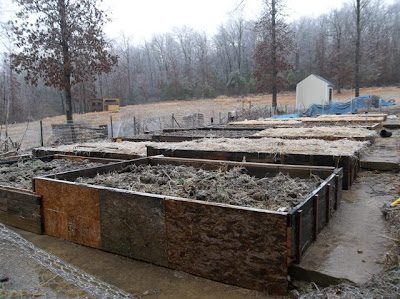










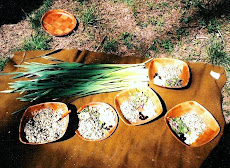









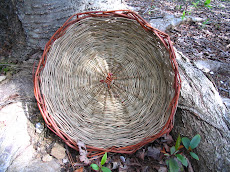



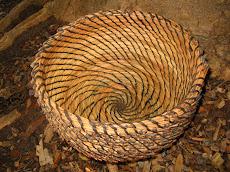



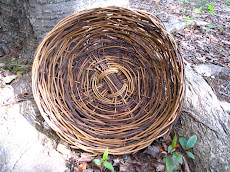

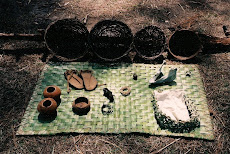


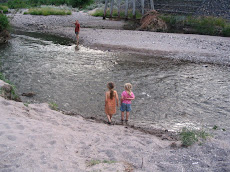

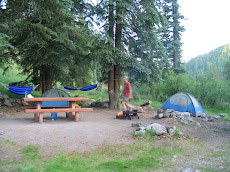


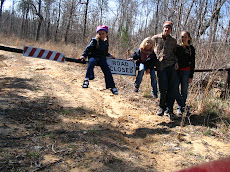

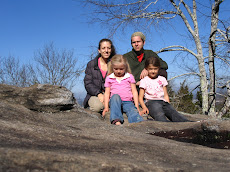




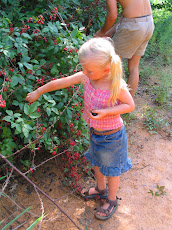







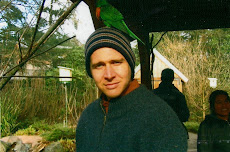
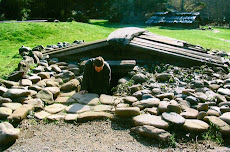

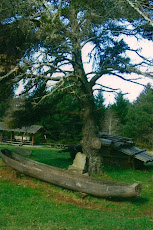



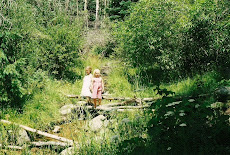
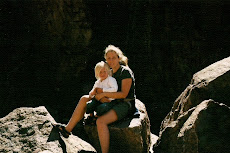
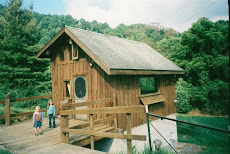

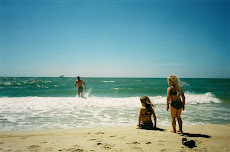
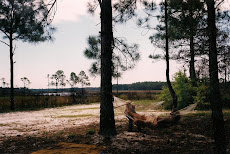

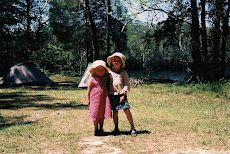.jpg)

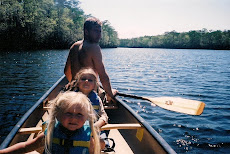.jpg)

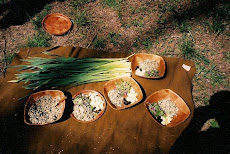
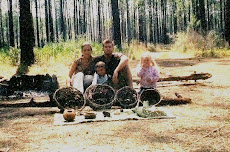
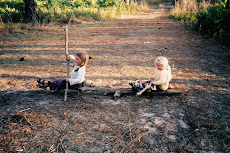.jpg)

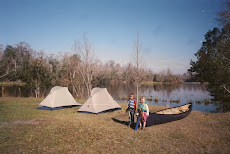

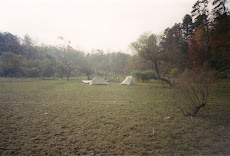
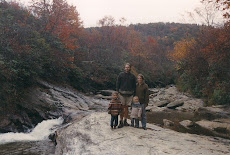
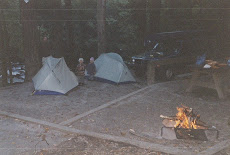


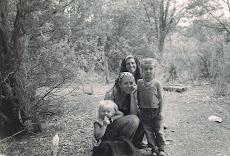.jpg)
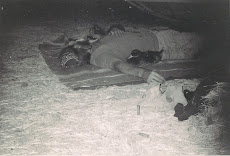.jpg)
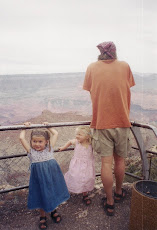
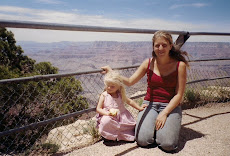.jpg)
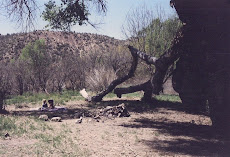.jpg)
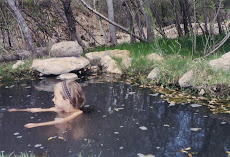
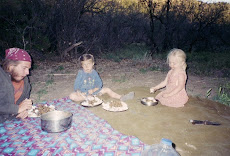.jpg)
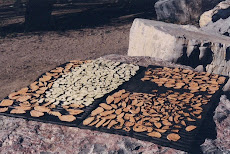
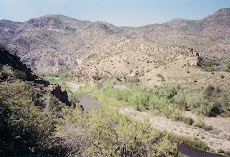.jpg)


